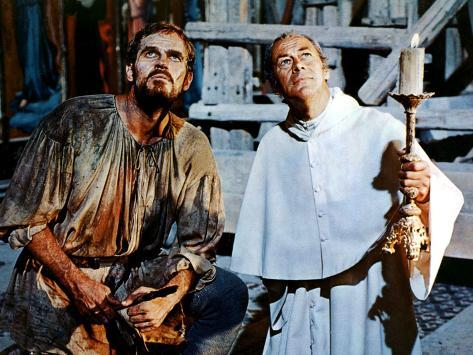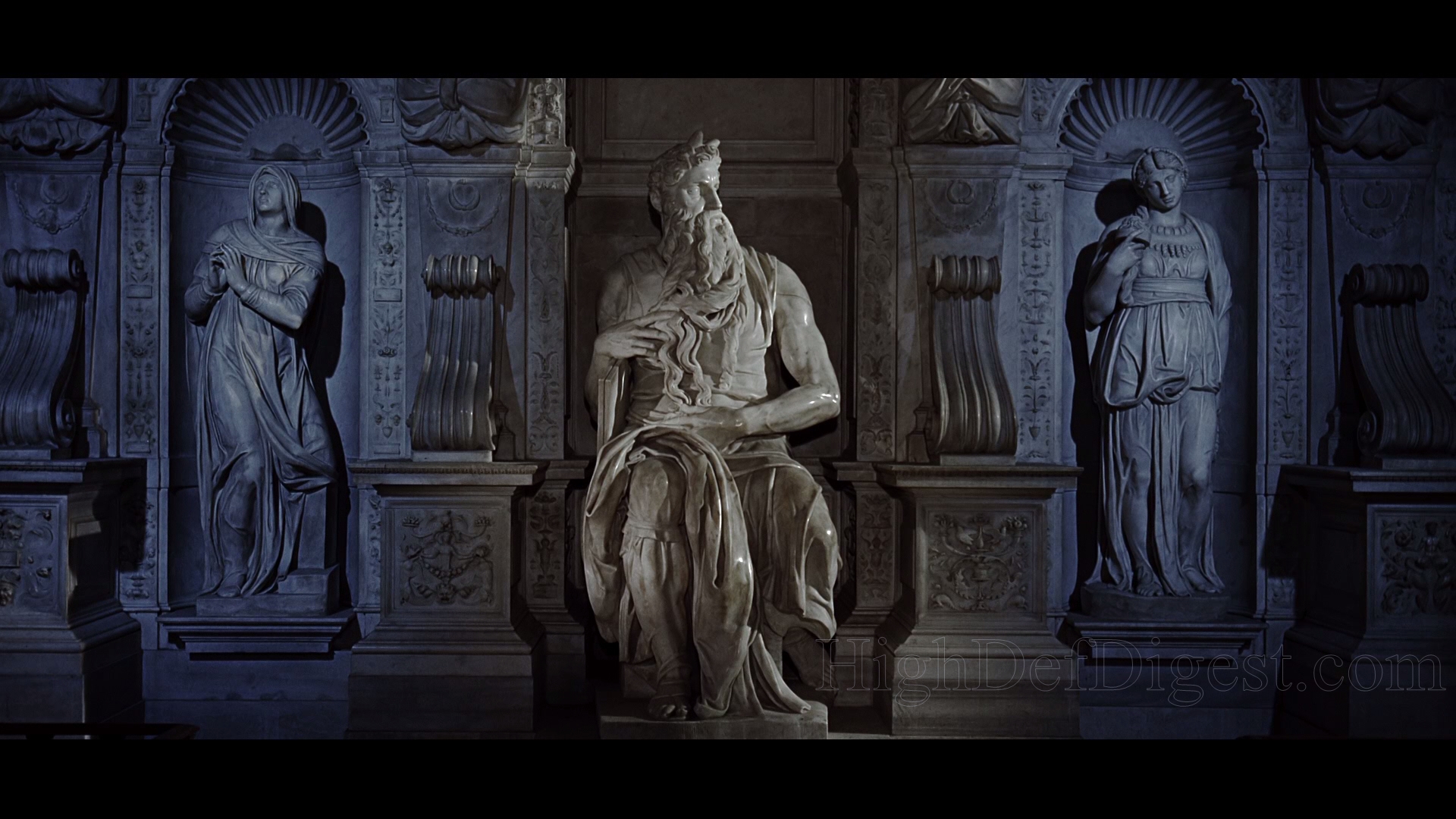The Agony and the Ecstasy was released in 1965. It stars Charlton Heston and Rex Harrison and was directed by Carol Reed (The Third Man). In it Pope Julius II (Harrison) commission Michelangelo Buonarroti (Heston) to paint the Twelve apostles on the ceiling of the Sistine Chapel. Not wanting to tie himself to such a monumental task because he considers himself a sculptor, Michelangelo at first flees, invoking the wrath of the Pontiff. He finally returns with his own, much grander, proposal for the ceiling: to paint a visual representation of humanity's need for salvation, portraying nine scenes from the book of Genesis, twelve prophetic figures, and the ancestors of Christ. Julius approves his plan and as the work carries on over the course of four years the two men continue to clash.
I first saw this film as a young child. I remember the impression it made on me about the difficulty of work that Michelangelo undertook, as well as the idea of artistic integrity. Michelangelo doesn't want to make someone else's idea of art but is compelled to follow his own inspirations. The film plays with the idea of censoring art and also of the unique vocation of the artist. I find this exchange between Michelangelo and his rival Raphael particularly interesting.
Raphael: We are harlots always peddling beauty at the doorsteps of the mighty.
Michelangelo: If it comes to that, I won't be an artist.
The main focus of the film is the often antagonistic relationship between the two main characters. Julius and Michelangelo are both vain and very egotistical people. Michelangelo resents the fact that the Pope is making him do this, often without being paid. Julius, on the other hand, is impatient to have the work done. One of the things I remembered from seeing it as a kid was Julius continually asking Michelangelo "When will you make an end?" to which he replies, "When I am Finished!" There is also a contrast between their relationship with, and perception of, God. In one scene Michelangelo finds Julius in the chapel late one night inspecting his work. As he looks at Michelangelo's depiction of the creation of Adam he asks him "Is that truly how you see Him, my son? Not angry, not vengeful but like that? Strong, benign, loving?" Michelangelo replies, "Well, he knows anger too, but... the act of creation is an act of love." The Pope, in this scene, is doubting his own resolve, while Michelangelo is more determined to finish the ceiling than ever. There different viewpoints, I think, reflect their relationship with God at this point in the film.
The film is fairly faithful to actual events though there are some discrepancies. Michelangelo really did leave Rome for Florence, only to be hunted by the Vatican, though he did so for different reasons than depicted in the film. There is no evidence (to my knowledge) that Michelangelo had a relationship with the Contessina de'Medici, this appears to be completely fabricated, as does the crippling illnesses both Julius and Michelangelo experience at different points in the film. Most of these departures are understandable but as a history buff I'm always concerned about Hollywood misleading people. With that said I haven't read the book this was based on and don't know how well researched the book was or how accurate the film is to it.
The Agony and the Ecstasy is certainly not without its flaws. There's a 15 minute opening scene where a narrator gives biographical information about Michelangelo and his works which, though interesting, seems a little unnecessarily long. In addition to this there's a point near the end of the film (mirroring an earlier scene where the roles are reversed) where Pope Julius is dying, his attempts to restore the papal states seemingly failed. Michelangelo, who recently has taken to humbling himself before Julius comes in and tells him that he is not going to complete the ceiling. This infuriates Julius and brings him out of his stupor. The film then cuts to years later when the work is finally complete and Julius is now triumphant over his enemies, ending the film. I understand why they did this, as the relationship between Julius and Michelangelo has come full circle at this point and the film wasn't getting any shorter, however it can't help but feel abrupt.  |
| The ceiling was actually recreated for the film by an Irish painter! |
Despite these pacing issues its still a very worthy film, featuring great performances from both leads, solid direction from Carol Reed, and a stirring score from Jerry Goldsmith (First Blood and Star Trek: The Motion Picture) and Alex North (Spartacus). I would say its definitely worth checking out, especially if your interested in renaissance or Church history.
Score: 9/10
Next Week: King of Kings (1961)




No comments:
Post a Comment